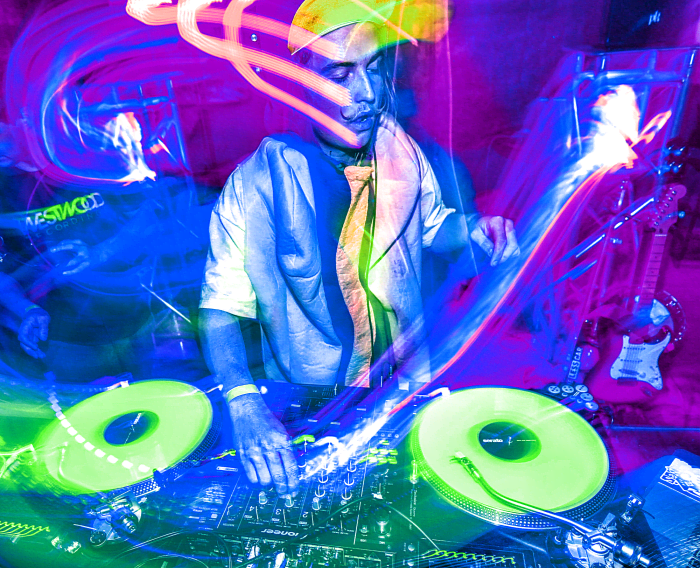500 Best Club Bangers of All Time

When DJs unleash thoughtfully curated playlists of club bangers, all hell breaks loose on the dance floor.
Greatest Club Songs of All Time
The music played at dance clubs is known for its electrifying energy. The groovy beats and slick productions bring nightclubs alive. When DJs start unleashing their thoughtfully curated playlists of club bangers, all hell breaks loose on the dance floor. Moving, shaking, grooving and dancing take a new avatar as sweaty bodies succumb to the sound of hypnotic club beats.
The list below showcases a collection of the best club bangers from different dance genres. If you have a view, opinion, or song suggestion, let us know in the comments section.
Top 10 Best Club Bangers of All Time
1. “One Kiss”—Calvin Harris and Dua Lipa
2. “Sweet but Psycho”—Ava Max
3. “Don’t Start Now”—Dua Lipa
4. “Break My Soul”—Beyonce
5. “Save Your Tears”—The Weeknd
6. “We Found Love”—Rihanna featuring Calvin Harris
7. “Taki Taki”—DJ Snake featuring Selena Gomez, Ozuna and Cardi B
8. “Where Are U Now”—Jack U with Justin Bieber
9. “Rain On Me”—Lady Gaga and Ariana Grande
10. “The Motto”—Tiesto and Ava Max
What Are Club Bangers?
Club bangers are dance songs that are made to get people go dance-crazy on the dance floor. In the true sense these songs are dance-bombs dropped by DJs that explode on the dance floor with a burst of energy and electronics. The lush production techniques and sophisticated lyrics give unique identity to these songs. The exhilarating feeling that comes when listening to a club banger is like no other.
Essentially these dance anthems are known for their alluring musical structure charged with vocal textures, rhythm, hook, and beat. The lyrical sentiments in these songs when combined with aesthetic electronic sounds are known to stir up emotions on the dance floor. It’s least surprising why party enthusiasts go in-trance or get emotionally supercharged when club bangers and summer anthems are played by DJs at nightclubs and parties.
Recommended
#11—20
11. “Levitating”—Dua Lipa featuring DaBaby
12. “Beg For You”—Charli XCX featuring Rina Sawayama
13. “As It Was”—Harry Styles
14. “Lean On”—Major Lazer and DJ Snake featuring Mo
15. “Bodak Yellow”—Cardi B
16. “Potion”—Calvin Harris, Dua Lipa and Young Thug
17. “Blinding Lights”—The Weeknd
18. “Don’t Forget My Love”—Diplo and Miguel
19. “Break Free”—Ariana Grande featuring Zedd
20. “Shape of You”—Ed Sheeran
Dance Music in the ‘80s
Electronic instruments became increasingly popular in different forms of dance music in the ‘80s. The nightclub scene in this decade helped revolutionize the electronic music scene. House music, influenced by funk, soul and disco, came into its own in the ‘80s. This genre which originated in Chicago, gradually became widespread in other parts of the US, before finding it’s blueprint across Europe. The house scene paved the way for the techno blueprint in the mid-80s, with a number of dance acts incorporating elements of house influences.
Local record labels promoted underground dance music in a big way thereby bringing a number of talented dance music acts to the forefront of mainstream. Aesthetically woven synth structures became an integral part of the sound adopted by new wave dance acts of the ‘80s. Dance songs stamped their authority in the decade. Eurodance which originated in Europe came into the forefront with its cutting-edge synth sounds, melodic hooks, and hypnotic bass rhythms.
#21—40
21. “About Damn Time”—Lizzo
22. “Cold Heart”—Elton John and Dua Lipa with Pnau
23. “Tell It to My Heart”—Meduza featuring Hozier
24. “Girls Just Want to Have Fun”—Cyndi Lauper
25. “This Is What You Came For”—Calvin Harris and Rihanna
26. “I Feel Love”—Sam Smith
27. “Good Ones”—Charli XCX
28. “Vogue”—Madonna
29. “Crazy What Love Can Do”—David Guetta, Becky Hill and Ella Henderson
30. “Don’t You Worry”—Black Eyed Peas, Shakira and David Guetta
31. “Stupid Love”—Lady Gaga
32. “Hot in It”—Tiesto and Charli XCX
33. “Break My Heart”—Dua Lipa
34. “Thank U, Next”—Ariana Grande
35. “All Falls Down”—Alan Walker featuring Noah Cyrus and Digital Farm Animals
36. “Happier”—Marshmello and Bastille
37. “SOS”—Avicii featuring Aloe Blacc
38. “In Don’t Search I Find”—Madonna
39. “What About Us”—Pink
40. “Piece of Your Heart”—Meduza featuring Goodboys
Dance Music in the ‘90s
Fusion dance genres stamped their authority in the ‘90s. Many artists associated with the house music of the ‘80s started merging their sound with dance-pop that became magnanimous in the ‘90s. As electronic music grew in popularity, a number of dance artists combined different forms of house and techno with diverse elements of rave, drum and bass, happy hardcore, and trip hop. Underground Dance songs had considerable mainstream success in the ‘90s.
The trippy sounds that resulted from the fusion of dance music styles became excessively popular at nightclubs and the rave scene. With computers and technology becoming an integral part of music production, a wider number of emerging musicians started incorporating nifty electronic elements in their scheme of things. DJ culture gained momentum as progressive house, vocal beat, big beat, and UK garage came into prominence in the club music scene.

Club bangers are dance-bombs dropped by DJs that explode on the dance floor with a burst of energy and electronics.
#41—60
41. “Don’t Forget My Love”—Halsey
42. “Into You”—Ariana Grande
43. “Animals”—Martin Garrix
44. “Best Friend”—Saweetie featuring Doja Cat
45. “Remember—Gryffin and Zohara
46. “Electricity”—Silk City and Dua Lipa featuring Diplo and Mark Ronson
47. “Numb—Marshmello and Khalid
48. “Summer”—Calvin Harris
49. “Dancing Feet”—Kygo featuring DNCE
50. “Cheap Thrills”—Sia featuring Sean Paul
51. “Let Me Love You”—DJ Snake featuring Justin Bieber
52. “Hey Mama”—David Guetta featuring Nicki Minaj, Bebe Rexha and Afrojack
53. “Never Really Over”—Katy Perry
54. “Rather Be”—Clean Bandit featuring Jess Glynne
55. “Sorry”—Justin Bieber
56. “Graveyard”—Halsey
57. “Drunk in Love”—Beyonce featuring Jay-Z
58. “Friends”—Marshmello and Anne-Marie
59. “Gangnam Style”—Psy
60. “Rise”—Jonas Blue featuring Jack & Jack
Dance Music in the 2000s
Trance music which became popular in the early 2000s, started losing steam as diverse forms of hard house and chillout became a craze. Chillout in particular achieved mainstream popularity in the decade with it’s characterized slow tempos and hypnotic sounds creating the perfect ambience at nightclubs and lounges. In the latter part of the 2000s, artists associated with electro house had their fair share of mainstream success. Certain artists rooted in non-mainstream dance genres had considerable success with their dance songs which became hip hop club bangers.
A number of dance-pop artists had chart-topping success with their unique blend of dance music and contemporary R&B. Towards the end of the decade, a number of young female artists started incorporating aesthetically crafted sounds of electropop, and Nu-disco in their dance-pop songs, many of which were deemed as thorough club bangers. This unique blend of dance sounds and rhythms became a rage with teens globally. Dance-pop which encompassed a wide spectrum of musical styles became the essential mainstream sound in dance music.




